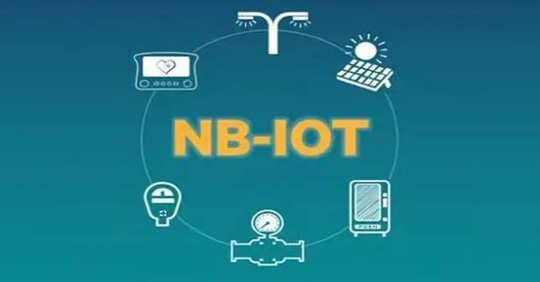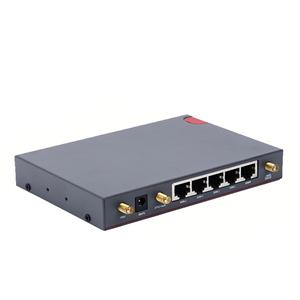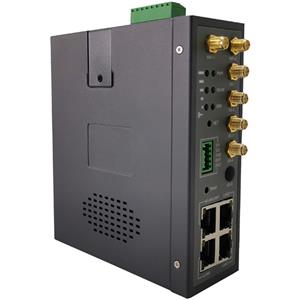NB-IOT and 3GPP
NB-IOT and 3GPP

NB-IOT is the narrowband Internet of Things, and 3GPP is the third-generation partnership project. These two terms are both abbreviations in the communications industry, and generally only practitioners in the communications industry are familiar with this.
NB-IOT is a typical technology of operator-level low-power wide-area IoT technology.
The Internet is constantly moving forward. Early terminals connected to the Internet were mainly computers and servers. In the 3G era, various mobile phones, notebooks, tablet computers and other mobile terminals were connected to the Internet, making the Internet enter the mobile Internet era.
In addition to these common personal terminals, there are also some industrial facilities, medical equipment, vehicles, home appliances, smart meters, and security facilities that need to be connected to the network. The network composed of these devices is called the Internet of Things.
Various Internet of Things technologies can be divided into short-distance Internet of Things and wide-area Internet of Things according to their different coverage areas. The more common short-distance Internet of Things technologies include WiFi, Bluetooth and other technologies.
The wide-area Internet of Things technology includes 2/3/4/5G, NB-IOT, eMTC, Lora and other technologies.
Some IoT terminals have relatively high requirements for power consumption. They require that the terminal can work for a long time without changing the battery, and it may even take 5-10 years without changing the battery. The technology that meets this scenario has also been Called low-power IoT technology.
The superposition of low power consumption and wide-area coverage requirements has formed the low-power wide-area IoT technology that is considered to be the most widely used in the Internet of Things technology.
NB-IOT is now the most extensive operator-level Internet of Things technology, and LoRa is a non-operator-level wide-area Internet of Things technology.
NB-IOT is a technology that China holds a large proportion of patents.
In May 2014, Huawei and Vodafone proposed the narrowband IoT technology NB-M2M. In 2015, NB-M2M merged with Qualcomm's NB OFDMA, and finally formed NB-CIOT.
In June 2015, scenarios including ZTE, Intel, Nokia, MediaTek, Samsung, and Ericsson proposed NB LTE solutions.
In September 2015, in the 3GPP R13 version, NB LTE and NB-CIOT merged to form NB-IOT.
In June 2016, the NB-IOT core standard was frozen.
Among the entire NB-IOT technical standards, China's Huawei has the highest contribution, followed by Qualcomm of the United States.
In July 2019, 3GPP formally submitted 5G candidate technical standard proposals to ITU-R (International Telecommunication Union). Among them, the low-power wide-area Internet of Things technology NB-IoT has been officially included in the 5G candidate technology set and submitted to the ITU-R jointly with NR as a component of 5G.
In July 2020, the 3GPP 5G technology was officially accepted by the ITU as the IMT-2020 5G technical standard, which means that NB-IOT was officially included in the global 5G standard at the same time.
3GPP is the third generation partnership alliance.
3GPP was established in December 1998, and it can be seen from the name that it was originally designed to promote 3G standards. The initial scope of work was to formulate globally applicable technical specifications and technical reports for the third-generation mobile communication system. The third-generation mobile communication system is based on the developed GSM core network and the wireless access technologies they support, mainly UMTS.
UMTS was originally based on WCDMA as the preferred air interface technology.
3GPP was originally established to promote and formulate the 3G standard WCDMA. Later, due to China's entry (June 1999), UMTS also introduced some of the TD-SCDMA technology.
Established at the same time as 3GPP is 3GPP2 led by Qualcomm, whose purpose is to promote the 3G standard of CDMA2000. Later, due to the failure of UMB, the subsequent evolution of CDMA 2000, Qualcomm joined 3GPP, and 3GPP2 survived in name only.
The membership of the 3GPP organization now includes operators, equipment vendors, and terminal manufacturers, covering all aspects of the communications industry.
3GPP continues to develop standards for 4G and 5G.
There are four international standards in 3G, namely WCDMA, TD-SCDMA, CDMA 2000 1x EVDO, and Wimax proposed by IEEE led by Intel.
The 4G international standards are only LTE-Advanced and IEEE 802.16m (the subsequent evolution technology of Wimax).
LTE-Advanced is divided into two branches, TDD and FDD, and TD-LTE is the branch dominated by China.
Later, the 4G standard relaxed the restrictions, and LTE became the 4G standard.
Due to the mobility problems encountered by Wimax in the actual deployment of operators, coupled with the boycott by China, Europe, and the United States, Qualcomm, etc. have died. After entering the 4G era, the LTE (LTE-A) standard is actually the only 4G standard. In other words, the actual 4G standards are actually formulated by 3GPP.
Due to the fruitful work of 3GPP, 5G standards have been continuously formulated during the formulation of 4G standards. Currently, the only 5G standard approved by ITU-R is submitted by 3GPP.
All in all, NB-IOT is a low-power wide-area Internet of Things technology, and it is also the most extensive Internet of Things technology deployed by operators around the world. 3GPP is a collection of the interests of the entire communications industry, and can basically be regarded as an international patent organization representing the interests of operators, equipment vendors, and terminal manufacturers.




